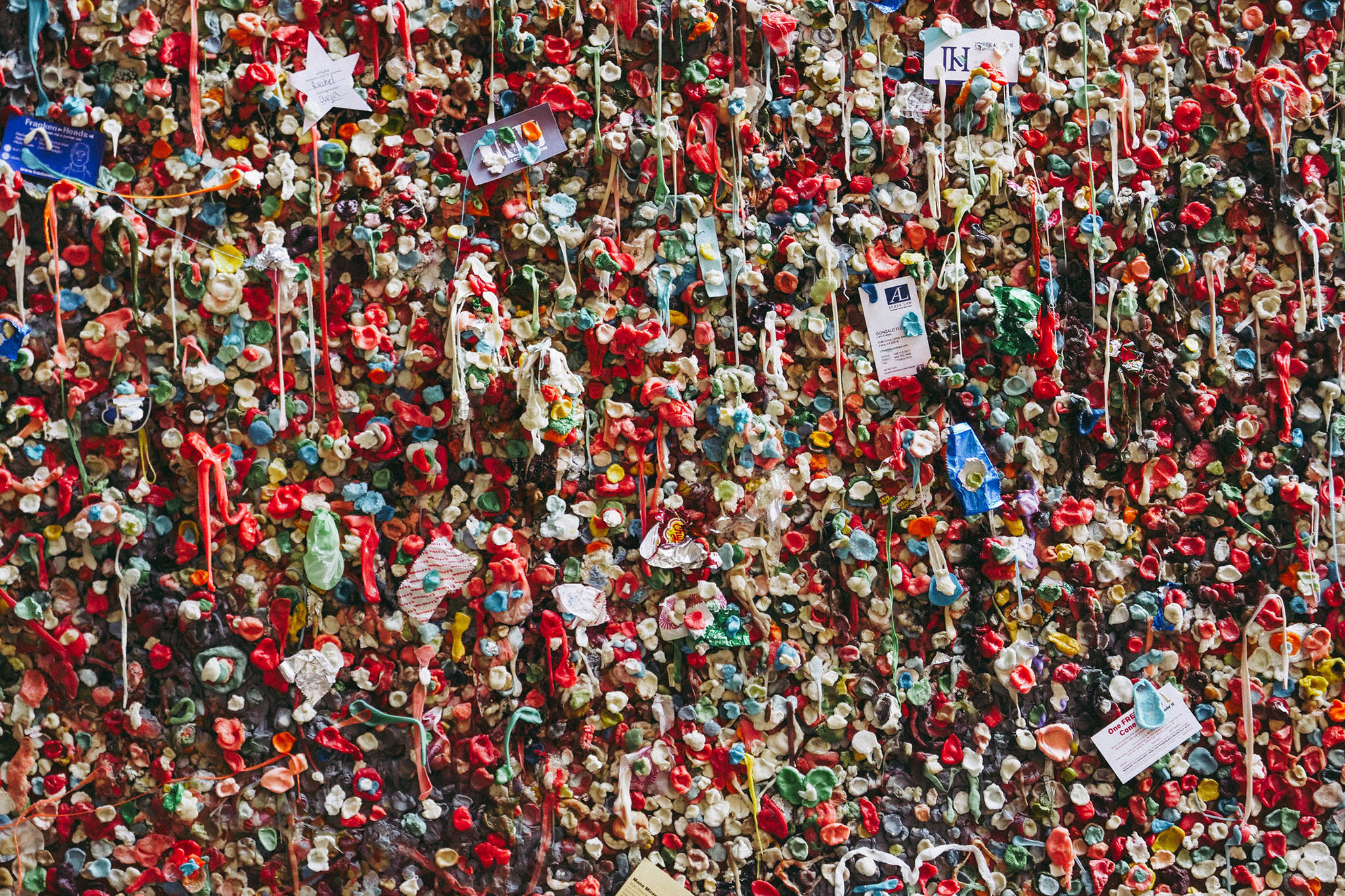By Peggy McKee Barnhill
I’ve been watching a lot of “Jeopardy” lately. You can learn a lot of things from watching “Jeopardy,” like how good you are at remembering state capitals or how much you really don’t know about any kind of video gaming. Today, I learned about the Gum Wall in Seattle.
This is a true story. Names have not been changed to protect the innocent.
Apparently, there is a brick wall outside the Market Theater in Seattle that people stick their used gum onto. On purpose. En masse. You have to see it to believe it. Picture a brick wall over 50 feet long covered with multicolored blobs of sticky, sugary chewing gum. It’s a school custodian’s nightmare!
This gummy tradition began in the 1990s as a way for theatergoers to rid themselves of their undesirable wads of gum before entering the theater. “Spit out your gum and stick it on the wall.” I swear, I am not making this up. Who knew that an offbeat method of garbage control would become a canvas for a 3-D form of pointillism? Everybody’s an artist when it comes to the Gum Wall. Evidently, people stick their gum on the wall with pennies, draw the gum wad out so it leaves a colorful tail, or create whole scenes or messages with their pre-chewed gum.
Maybe you’ve seen this curious wonder of the world. The Gum Wall has been touted as one of the five germiest tourist attractions in the world. Number one is the Blarney Stone in Ireland that tourists kiss to receive the gift of gab (I believe this was once the subject of a Jeopardy question). So, you can travel to Ireland to kiss a stone previously kissed by millions of other people (yuck!) or you can zip on over to Seattle and add your pre-chewed gum to a wall weighed down by thousands of pounds of the sticky stuff (also yuck!).
I wonder how this type of germy tourism has fared during the pandemic. Can people still kiss the Blarney Stone, or are they encouraged to blow kisses from a safe six-foot distance instead? Is the Gum Wall still accessible, or is it sealed behind a sheet of plexiglass for sanitation purposes? How do you get the gum out of your mouth if you’re wearing a facemask? Does the theater provide hand sanitizer in case of accidental hand to gum contact? These are the sticky questions that demand answers.
Then, I have to wonder about the advisability of leaving your personal DNA behind on this public gum wall. Researching DNA has become akin to a parlor game—a way to search your ancestry and add yourself to a national database that can be accessed by armchair historians looking for their long-lost cousins. These databases are also used by police detectives looking to solve cold cases. What better place for a gumshoe to collect DNA than a wall of used chewing gum? If I was writing a mystery series set in Seattle, I would totally have my killer be identified through DNA taken from the wad of gum he left behind on the Gum Wall. Fictional serial killers, beware!
Other than a source of DNA or inspiration for a writer, it’s hard to think of any function for a brick wall covered in used chewing gum. Maybe it could be a mini laboratory for middle school students to take cultures and test for bacteria. Or it could serve as a subject for budding photographers learning how to use color in their photos. It could be the site of a code pointing the way to a treasure trove of brand new, unopened and unchewed gum. Or maybe it’s just a tacky destination for folks out on a date.
At the very least, Seattle’s Gum Wall provides a wacky topic of conversation for fans of “Jeopardy.”
•Peggy McKee Barnhill is a wife, mother, and author who writes cozy mysteries under the pen name “Greta McKennan.” She likes to look at the bright side of life.

